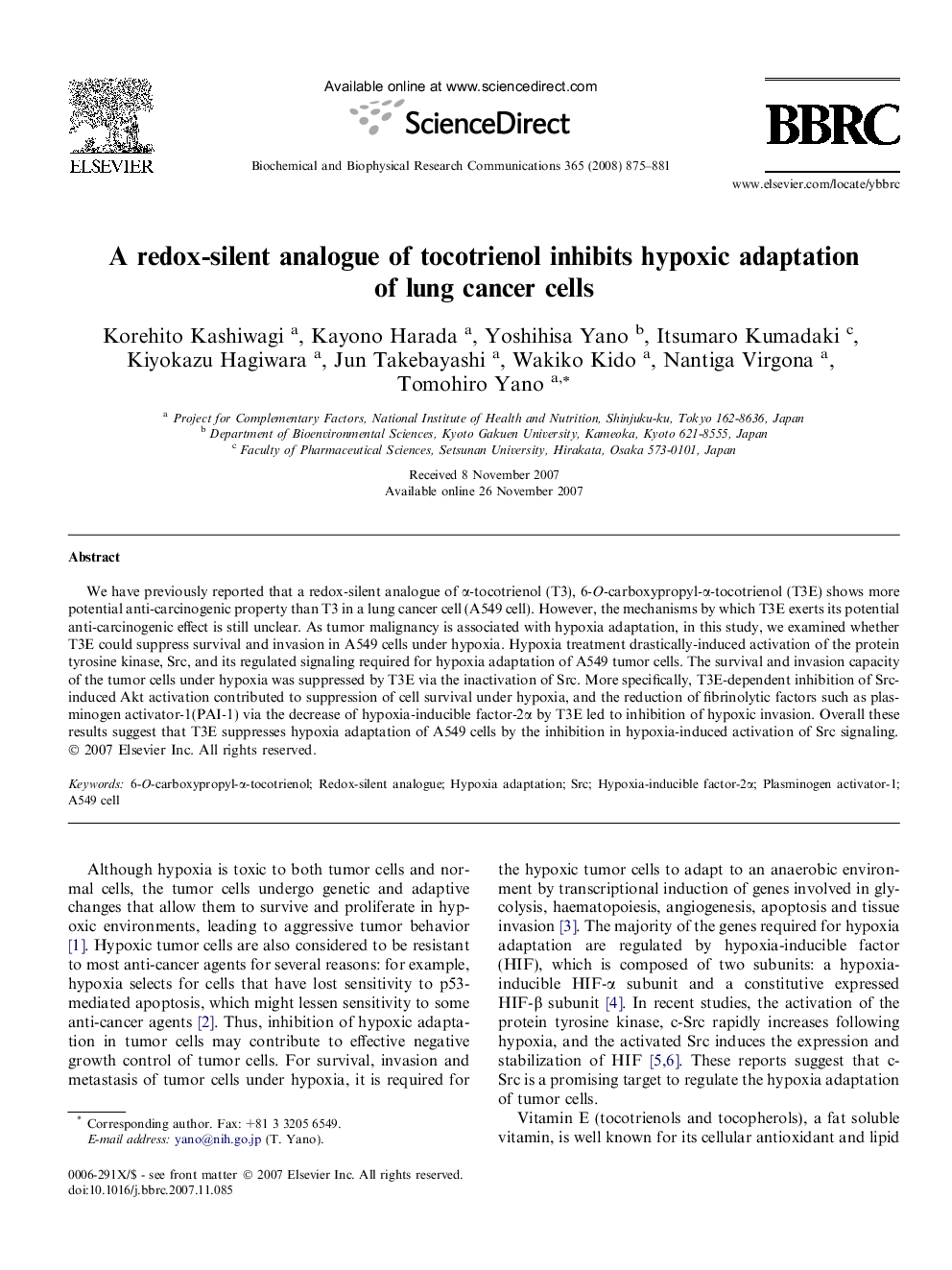| Article ID | Journal | Published Year | Pages | File Type |
|---|---|---|---|---|
| 1936805 | Biochemical and Biophysical Research Communications | 2008 | 7 Pages |
We have previously reported that a redox-silent analogue of α-tocotrienol (T3), 6-O-carboxypropyl-α-tocotrienol (T3E) shows more potential anti-carcinogenic property than T3 in a lung cancer cell (A549 cell). However, the mechanisms by which T3E exerts its potential anti-carcinogenic effect is still unclear. As tumor malignancy is associated with hypoxia adaptation, in this study, we examined whether T3E could suppress survival and invasion in A549 cells under hypoxia. Hypoxia treatment drastically-induced activation of the protein tyrosine kinase, Src, and its regulated signaling required for hypoxia adaptation of A549 tumor cells. The survival and invasion capacity of the tumor cells under hypoxia was suppressed by T3E via the inactivation of Src. More specifically, T3E-dependent inhibition of Src-induced Akt activation contributed to suppression of cell survival under hypoxia, and the reduction of fibrinolytic factors such as plasminogen activator-1(PAI-1) via the decrease of hypoxia-inducible factor-2α by T3E led to inhibition of hypoxic invasion. Overall these results suggest that T3E suppresses hypoxia adaptation of A549 cells by the inhibition in hypoxia-induced activation of Src signaling.
